Major events such as the World Cup, the Olympics, or a United Nations Climate Change Conference (COP) require extensive preparation and planning in areas like infrastructure, logistics, transportation, and hospitality.
In the lead-up to COP 30, which will take place in a few days in Belém, much has been said about hospitality: from the possible initial shortage of hotel rooms to host the roughly 50,000 expected visitors to the exorbitant prices being charged per night. Also, much has been said about the infrastructure built around the event, be the venue itself, the City Park; the new tourist and leisure areas; or the construction projects aimed at improving traffic flow across the metropolitan region.
But what about healthcare and public safety, how has the city been prepared? According to agencies in those sectors, large-scale operations have been in the works for the past two years — ever since Belém was confirmed as the host city for the Conference.
SECURITY
Ualame Machado, head of the State Secretariat for Security and Social Defense (Segup), explains that there is an Integrated Security Plan for COP 30, which includes not only state forces but also federal and municipal ones. The secretary, who is originally a Federal Police officer, has previously worked on major events in the country, such as the World Cup, the Pan American Games, World Youth Day, and the Olympics. In his view, these events have given Brazil substantial know-how in security preparation.
‘There’s a well-structured policy and strategy, very smoothly coordinated among the agencies involved. We have what we call a “responsibility matrix:” a spreadsheet listing all the tasks required during a major event, specifying which agency is responsible for each action,’ he explains.
The matrix was developed in collaboration with the federal government, which is officially responsible for hosting COP 30. ‘It is Brazil that hosts the event, and Belém was chosen as the host city, but the responsibility lies with the Brazilian government. So, the matrix was created through a joint effort. Federal agencies have responsibilities, such as the security of heads of state, counterterrorism, and other situations. State agencies come in to provide support for all of this, handling policing, monitoring, and maintaining public order, just as municipail agencies do with mobility and local security,’ he explains. The security plan has been approved by the United Nations (UN), which organizes the COP.
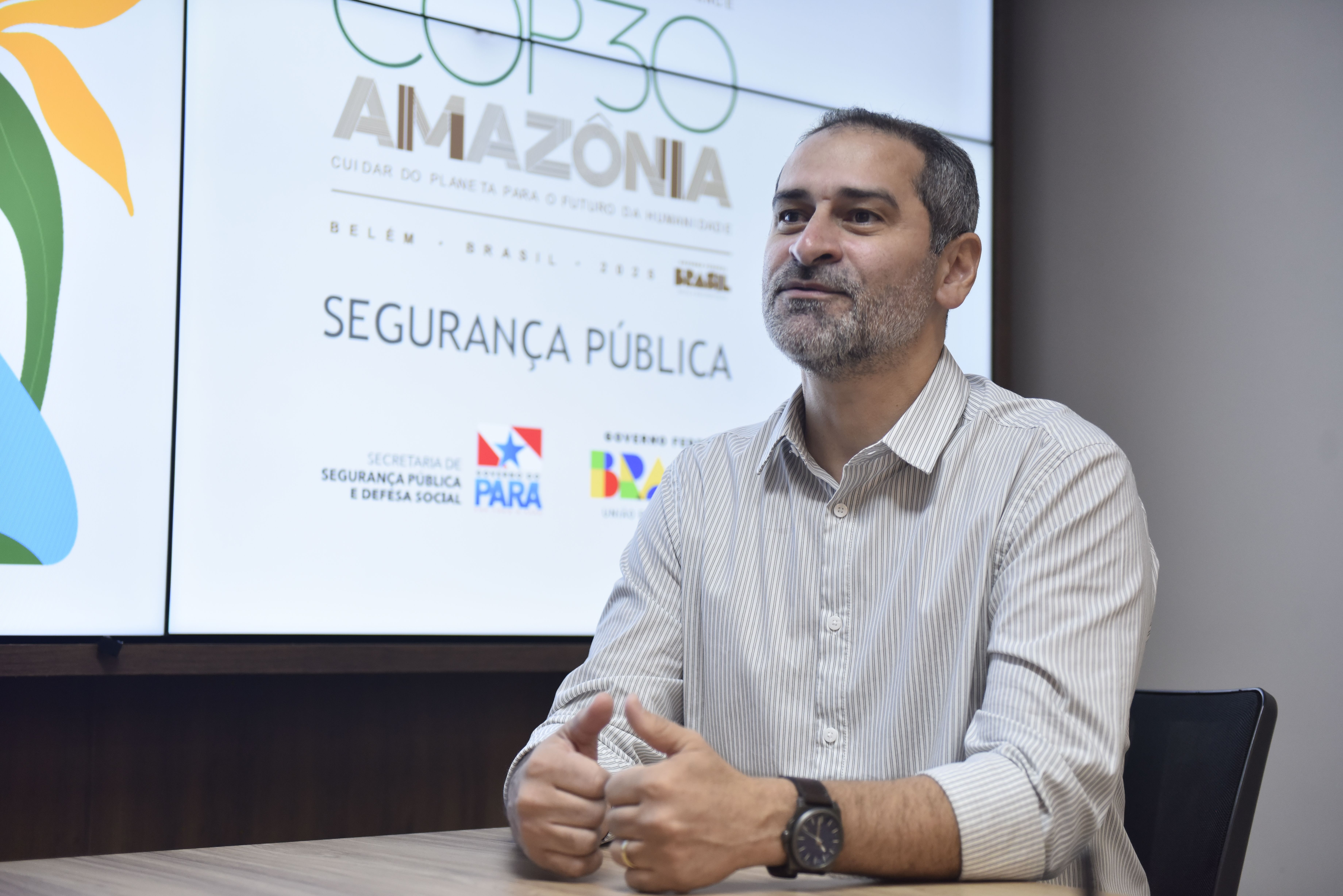
STRUCTURE
Machado reports that around 10,000 state law enforcement personnel will be involved in the operation, including members of the Military, Civil, Penal, and Scientific Police, as well as firefighters and staff from the Departamento Estadual de Trânsito (Detran) [State Traffic Department]. More than 700 vehicles will be deployed, in addition to boats and aerial units. ‘This refers only to state forces, not to mention municipal officers, the Armed Forces, the Federal Police, and the Federal Highway Police,’ says the secretary.
In addition to Segup’s permanente Centro Integrado de Comando e Controle (Cicc) [Integrated Command and Control Center], located on Almirante Barroso Avenue and responsible for monitoring security cameras and optimizing response times in case of incidents, a mobile Cicc will be set up in front of the Hangar. The Integrated Public Security Fluvial Base for the Lower Tocantins, which will soon be established in the municipality of Abaetetuba, will be temporarily stationed at the Outeiro port to support the area where ships will be used for accommodations.
With regard to emergency services, anyone calling for help will be able to dial not only the local numbers — such as 192 for the Mobile Emergency Care Service (Samu), 190 for the Civil Police, or 193 for the Fire Department — but also the numbers they know from their home countries, like the emergency number 911 in the United States and Canada, or the number 112 in the European Union. Assistance will be provided in three languages: Portuguese, English, and Spanish.
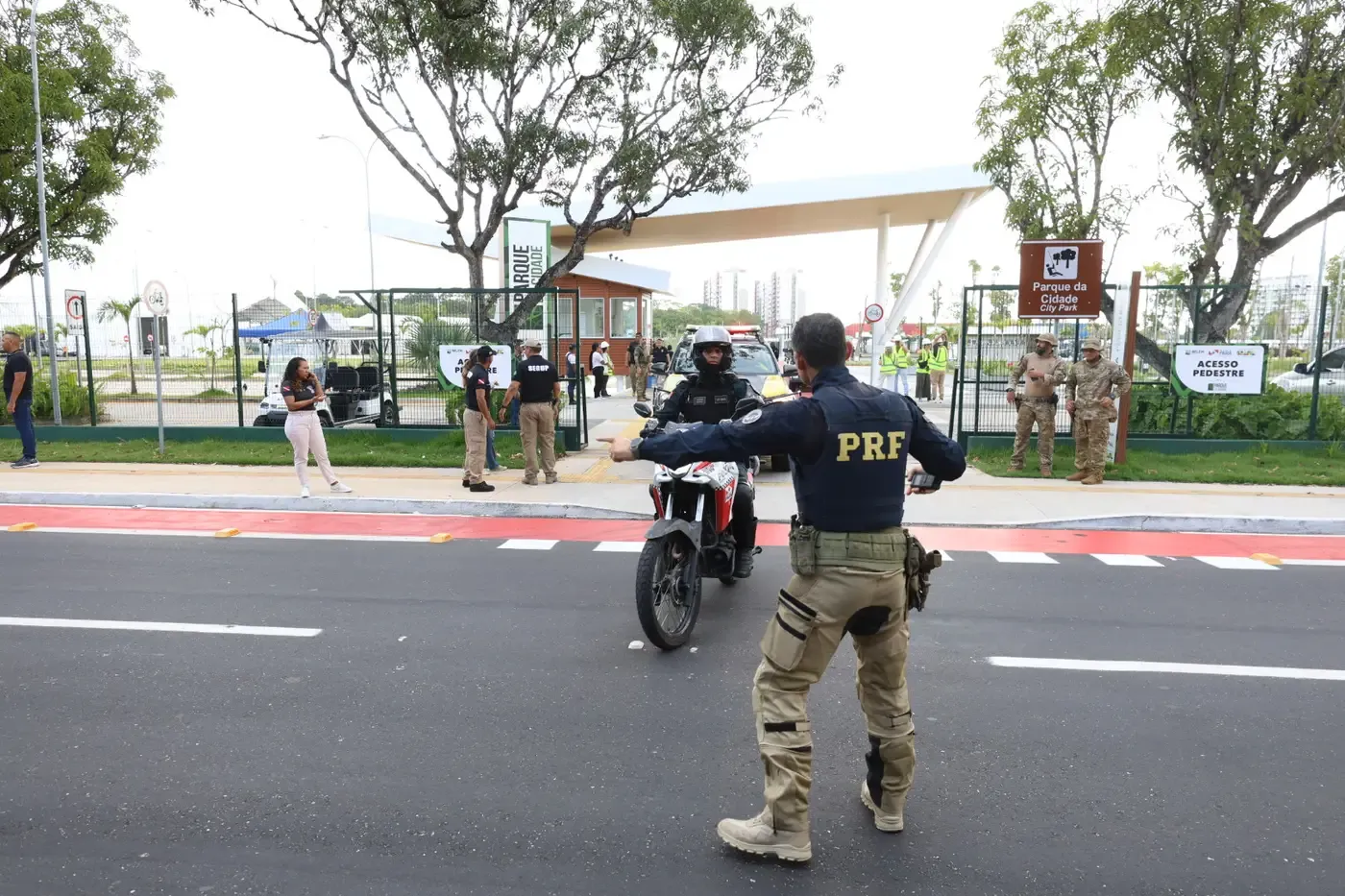
Security officers have been trained
According to Ualame Machado, the security forces have carried out several specialized training sessions in preparation for the Conference. ‘For example, it’s not part of our routine in Brazil to focus so heavily on terrorism, since it’s not an issue the country typically faces. But we know that heads of state from other countries do deal with it, and we were concerned about being prepared for that. Only in the last few years have the Military Police undergone six specific training programs on aircraft hijacking, bomb disposal, counterterrorism, and cybersecurity,’ he reports.
State forces, alongside federal and municipal ones, also took part in escort training for officials attending the Leaders’ Summit, which will take place on the forthcoming 6th and 7th. ‘Under Brazilian law, the Federal Police is in charge of the security of foreign heads of state. The Federal Highway Police (PRF) handle the escort of motorcades during moves, while the Federal Police provide close protection for those dignitaries. The state’s public security forces, in turn, are in charge of all other aspects of regular policing and maintaining public order,’ Machado explains.
Around 200 security and traffic officers from various governmental levels took part in field training, while other agents monitored the real-time moves from the Escort Command Center. The Center is coordinated by the PRF and staffed with officers from Detran, the Military Police, and Belém’s Secretaria Municipal de Segurança, Ordem e Defesa Civil de Belém (Segbel) [Municipal Department of Security, Public Order, and Mobility].
According to Salim Junes, Communications Advisor for the PRF, the agency is deploying more than 900 federal highway officers for COP 30, including 400 motorcyclists who will work directly on escort duties. ‘During the Leaders’ Summit, an estimated 70 motorcades will be on the move, making this the largest escort operation ever carried out by the agency,’ Junes emphasizes.
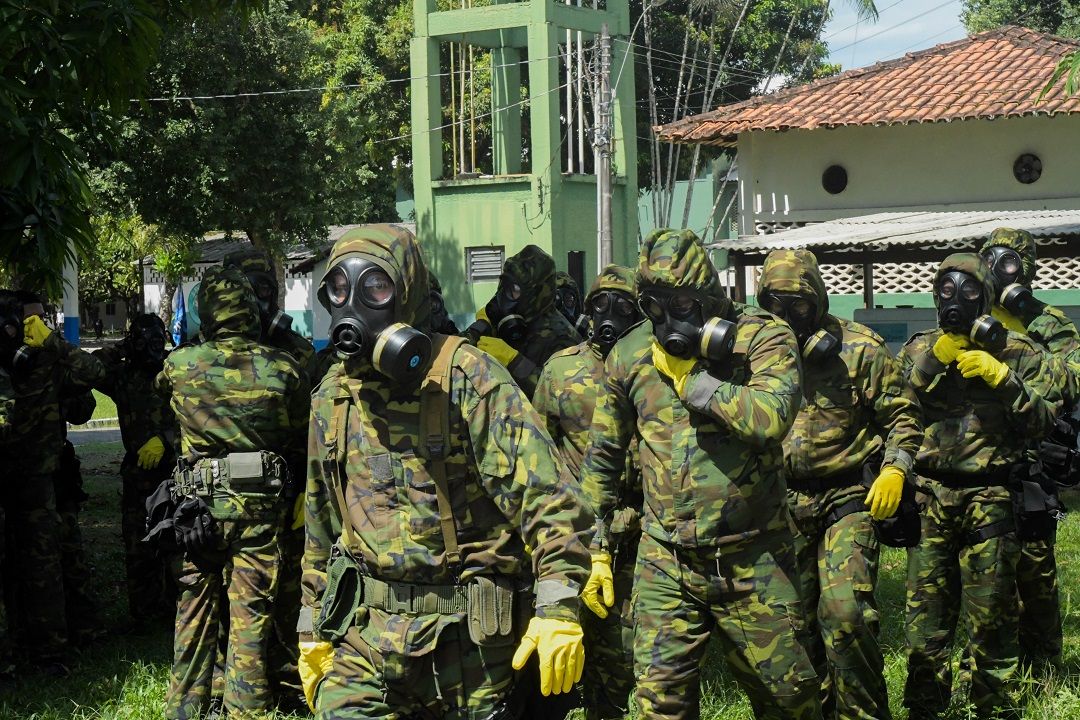
GLO
The entire route planned for the authorities’ movements is equipped with security cameras monitored by Segup’s Cicc. ‘During the Leaders’ Summit, our Cicc will be under the responsibility of the Federal Police, so they can coordinate this operation. Then, during the COP, from November 10th to 21st, the Federal Police will scale back its personnel somewhat, since many heads of state will no longer be here. From that point on, it’s much more about policing the streets and maintaining public order. It becomes an even greater task for the state’s security agencies, working together with the military forces. That’s because, in all major events in Brazil — without exception — a Guarantee of Law and Order (GLO) is issued, which authorizes the Armed Forces to assist in security operations,’ Machado adds.
The Armed Forces make up the Marajoara Task Force
In May, the Ministry of Defense created a specific operation for the COP 30 period — the Marajoara Joint Operational Command. It’s a temporary structure that brings together the three branches of the Armed Forces: the Army, the Navy, and the Air Force.
According to Army General José Ricardo Vendramin, Northern Military Commander and head of the Marajoara Task Force operations, the three branches of the Armed Forces will include personnel not only from Pará but also from other parts of Brazil. ‘We have a joint task force specializing in counterterrorism, and in chemical, biological, radiological, nuclear, and cyber defense,’ the general reported.
The Commander stated it is expected that the Guarantee of Law and Order (GLO) be enacted at the beginning of November and remain in effect for a period after the COP. ‘That will give us the legal authority to operate. There are two main fronts: one is supporting public security, and the other is protecting strategic infrastructure. We’ll be safeguarding the Tucuruí and Belo Monte power plants. In Belém, we’ll also protect the Guamá Power Station, the Guamá Water Pumping Station, and the Bolonha Water Treatment Plant. We’ll also provide cyber defense, since attacks of that kind could disrupt the control systems of major infrastructure, such as a power plant,” he highlighted.
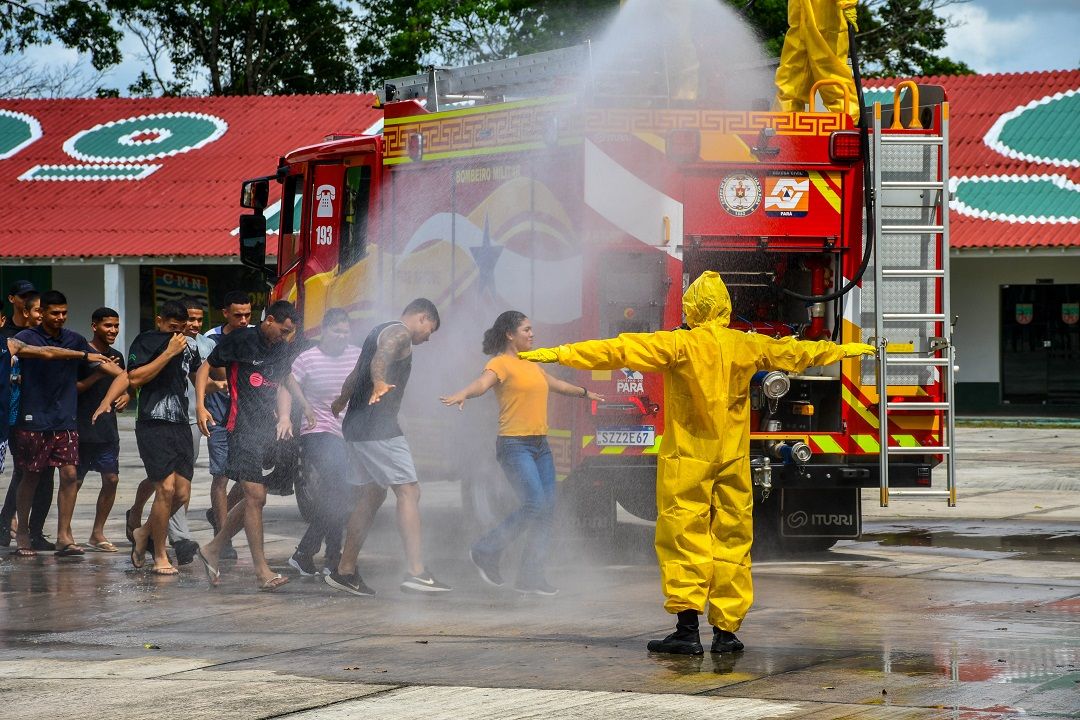
Moreover, the military will work in cooperation with other federal, state, and municipal security forces. ‘We’ll have Army troops stationed around the Blue Zone and Green Zone, in the City Park, and Navy troops in Outeiro, where the cruise ships will dock,’ the general exemplified.
The total number of personnel mobilized by the Armed Forces will directly involve 7,276 military officers. The operation will use 19 armored vehicles, 30 boats, 13 ships, and three aircraft.
Sespa has been preparing for the event for two years
Just as for the public security sector, a State Plan for COP 30 has been designed for public health, which was likewise approved by the UN. According to Heloísa Guimarães, Deputy Secretary for Health Policy Management at the Secretaria de Estado de Saúde Pública (Sespa) [State Department of Health], the plan was developed over two years, based on international protocols specifically designed for mass events.

To support visitors’ healthcare needs, 14 reference hospitals were designated, including private, philanthropic, and state-run facilities, as well as municipal Unidades de Pronto Atendimento (UPAs) [Emergency Care Units]. The state emergency units selected include Hospital de Clínicas Gaspar Vianna, Hospital da Mulher, Jean Bitar, Metropolitano de Urgência e Emergência, Abelardo Santos, Santa Casa, and Pronto Socorro Dr. Roberto Macedo.
‘At these facilities, we carried out care drives in 2024 and 2025, operating at 30% higher productivity to reduce the number of appointments during the COP. This way, the hospitals will be better prepared to accommodate tourists if needed,’ the secretary clarified.
SIMULATIONS
Just like in the security sector, the health area conducted various training exercises, including simulations of potential scenarios. ‘We trained the team at Hospital Metropolitano, which will serve as the reference center for mass-casualty events. If there’s an explosion, a building collapse, or a bus accident, all victims will be taken there. We also simulated crisis situations in outdoor areas, training for rescue, risk assessment, medical care, transportation, and even the involvement of the Medical Legal Institute. This training involved the Força Nacional do Sistema Único de Saúde (SUS) National Health System Force, firefighters, Civil Defense, and the Army. We also conducted a more specialized training for biological, chemical, and radiological accidents, simulating attacks. All of this is aimed at minimizing response time,’ Heloísa said.
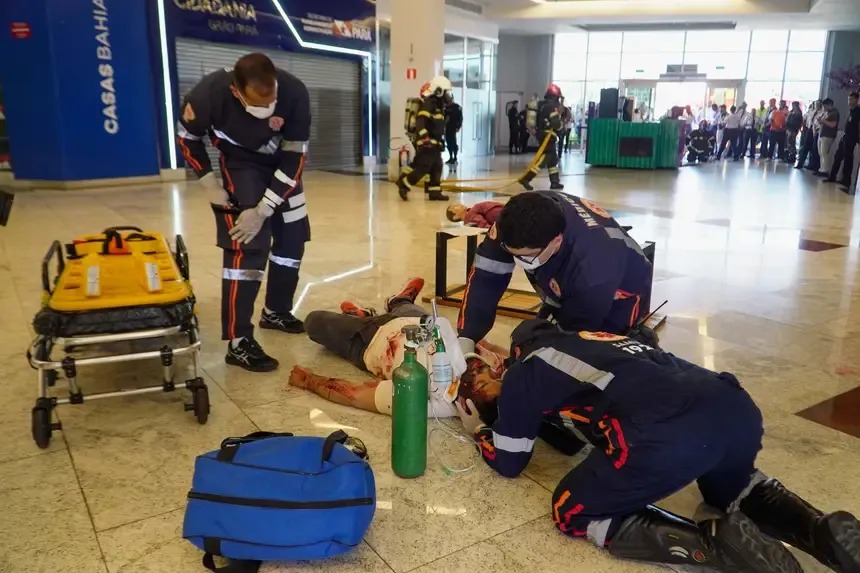
HEALTH STATIONS
Healthcare services will also be available in City Park. There will be four large temporary medical stations for conference attendees, each staffed with a doctor, nurse, and nursing technician, and equipped with a triage room, observation chairs, and a red emergency and urgent care room. Also, there will be five mobile teams, each with a doctor and a nurse, patrolling the area with a first-aid backpack. The teams will consist of Sespa staff, as well as personnel from the National Health System Force from Brasília.
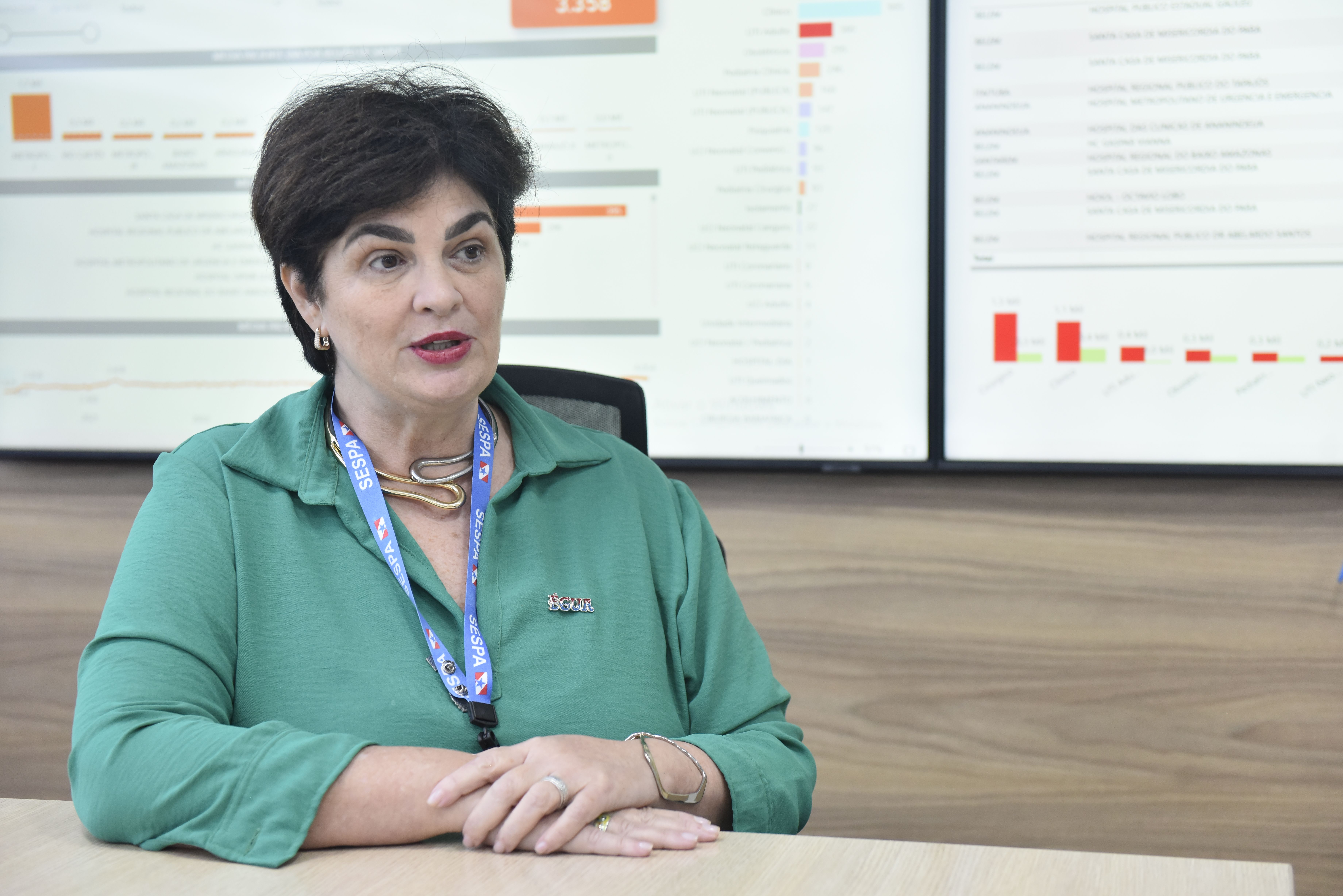
Additionally, medical stations will be set up at the Federal University of Pará School of Application (UFPA), where around 3,000 indigenous people will be staying, and at UFPA itself, which will host the People’s Summit, with an expected daily attendance of about 15,000 participants. ‘All of this will help prevent hospital overcrowding. It required a lot of preparation. The entire Sespa team has been planning for this for two years. The protocol we used was followed to the letter in its development. We are well prepared,” the deputy secretary assured.
INSTITUTIONAL PARTNERSHIP
The production of Liberal Amazon is one of the initiatives of the Technical Cooperation Agreement between the Liberal Group and the Federal University of Pará. The articles involving research from UFPA are revised by professionals from the academy. The translation of the content is also provided by the agreement, through the research project ET-Multi: Translation Studies: multifaces and multisemiotics.